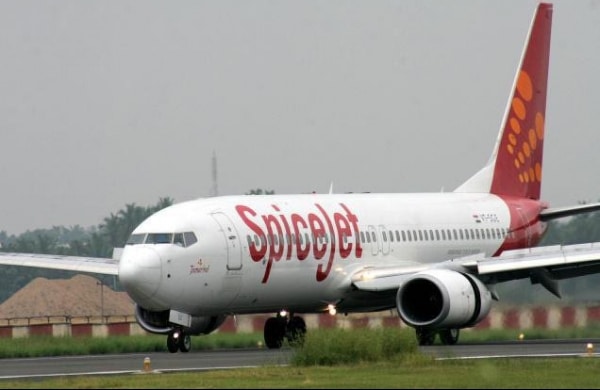Aerospace
Five operators will operate on 128 routes and connect 70 indian regional airports.

According to The Hindu Flights for Rs. 2,500 connecting these smaller centres may begin from April
Beginning April, passengers may be able to fly on as many as 128 routes connecting 70 big and small airports across the country by paying ₹2,500 for an hour’s flight.
The Centre on Thursday announced a list of routes awarded to five airlines which will operate flights under its regional connectivity scheme, named UDAN (Ude Desh ka Aam Naagrik).
“We will be adding 43 new destinations with the launch of RCS,” Civil Aviation Minister Ashok Gajapathi Raju said. “Flying was a rich man’s prerogative earlier, but now it has also become a common man’s prerogative.”
Turbo Megha Airways Low-cost airline SpiceJet, Air India subsidiary Alliance Air along with regional airlines Turbo Megha Airways, Air Deccan and Air Odisha Aviation won the rights to operate flights under the regional connectivity scheme under which half of the seats on the plane will be capped at ₹2,500 per hour’s flight.
Some of the inactive airports that will soon witness regional flights include Shimla, Agra, Bikaner, Gwalior, Kadapa, Rourkela, Jharsuguda, Vidyanagar, Burnpur, Diu, Shillong, Kullu, Mysore, Jagdalpur, Salem, Utkela, and Hosur.
The regional airlines will connect these destinations with their nearest bigger airports such as Delhi, Bengaluru, Chennai, Bhubaneswar, Mumbai, Ahmedabad, and Jaipur, among others.
Civil Aviation Secretary R.N. Choubey said that the first regional flight may likely begin its operations in April. “Fortunately, in the first round of bidding, the airlines focussed on airports that are ready to take flights. The deadline to start operating regional flights is September,” Mr. Choubey said.
Subsidy on losses
As per the scheme, the Centre will subsidise the losses incurred by airlines flying out of dormant airports to help airlines charge ₹2,500 for an hour’s flight to passengers.
80% of the subsidy will be collected by charging a levy of up to ₹8,500 on each departing flight of domestic airlines and the rest 20% will come from the respective State governments.
The Centre had asked airlines to submit their proposed routes along with subsidy amount required to operate the regional flight. This was followed by counter-bids from other airlines and the one asking for the least financial support won the bid.
Government will provide subsidy to airlines for first three years of operations when they will have exclusive flying rights on the selected routes.
“The scheme has a unique market-based design. We have a successful national and international aviation market but an underdeveloped regional market. This scheme will stimulate growth in the regional aviation market and will connect underserved and unserved airports that really didn’t have flight services,” Minister of State for Civil Aviation Jayant Sinha said.
Mr. Sinha said the airlines which had won the first round of bidding under the scheme would require a subsidy of ₹205 crore for running their operations. This would ultimately lead to the creation of 13 lakh seats in the regional aviation market.
“This is really about bootstrapping and creating a market which is not a perpetual subsidy,” Mr. Sinha said. “Once the market gets jump started, it will operate on a commercial basis as per market forces of supply and demand,” the Minister of State added.
To know more click here scheme proposal

Aerospace
When Ratan Tata was denied entry to the airfield at the Aero India show, he waited

During our visit to Aero India 2019, we had the unexpected opportunity to see Ratan Tata at the event, which was a thrilling moment for us. However, there was a surprising hiccup when the security staff didn’t allow him to enter due to a lack of a security pass.
Despite this, he remained calm and patiently waited for about 20 minutes until a member of the Tata team brought him the required pass, after which he calmly proceeded inside. It was a humbling sight, showcasing his composed demeanor even in such situations.
Ratan Tata ji is not only a renowned industrialist but also a trained pilot, holding a pilot’s license. In 2007, he became the first Indian civilian to fly the F-16 Falcon during the Aero India show in Bangalore—a proud moment for the nation.
His passion for aviation extended beyond flying, as he played a key role in shaping India’s aerospace industry. Under his leadership, Tata ventured into manufacturing and maintaining aerospace components while upholding its legacy of quality. Notably, Tata’s collaboration with Airbus to develop and manufacture the C295 aircraft is a testament to its growing influence in the sector.
-

 Aviation2 months ago
Aviation2 months agoBoeing confirms 797: A New Era for Mid-Size Aircraft
-

 Aviation2 months ago
Aviation2 months agoMicrosoft Flight Simulator Raises $3 Million to Bring Back the An-225 Mriya
-

 Aviation2 months ago
Aviation2 months agoLockheed and Tata Team Up to Build C-130J MRO Facility in India
-

 Airlines2 months ago
Airlines2 months agoQantas Engineers Stage Walkout Over Cost of Living Concerns
-

 Airlines2 months ago
Airlines2 months agoQatar Citizens Can Travel to the United States Without a Visa
-

 Aviation2 months ago
Aviation2 months agoBoeing Offers 25% Pay Increase & Promise to Build Next Plane in Seattle
-

 Aviation2 months ago
Aviation2 months agoQatar Airways bans these new Electronic Devices on plane
-

 Airlines2 months ago
Airlines2 months agoEmirates Ends 28-Year Singapore-Melbourne Fifth Freedom Route








